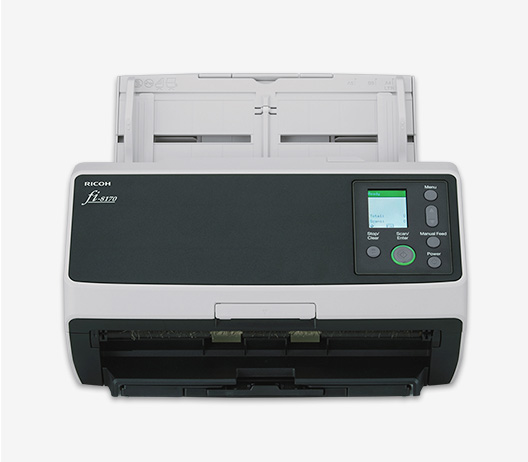Southwest Health
As hospitals evolve in a rapidly changing industry, the quality of care is largely dependent upon a hospital's ability to uphold an efficient work environment. Electronic records can prevent errors, improve diagnostic work, avoid duplication of tests and procedures, and simplify clinical studies.
Located in Liberal, Kansas, Southwest Medical Center (SWMC) has operated as a not-for-profit acute care hospital since its inception in 1964. It has become a highly respected regional medical center, serving patients from Kansas, Colorado, Oklahoma, Texas, and New Mexico. SWMC aims to “Keep Quality Healthcare Close to Home” by providing compassionate patient service, highly skilled physicians, and advanced technology to its patients. However, the facility’s medical record system was rapidly becoming ineffective, due to its physical storage systems reaching capacity, despite the fact that they diligently purged expired medical records every year.
As part of its commitment to quality healthcare, both from a patient service and operational infrastructure perspective, SWMC decided to further improve its workflow methods by expanding upon their existing Electronic Medical Records (EMR) system. Expanding their EMR enabled SWMC to operate more efficiently to keep the focus on its patients, not its processes, and maintain its reputation as a healthcare leader.
When you're trying to do a job and the tools aren't working the way they're supposed to, it's frustrating. We had a trial run with several other vendor products before deciding on fi Series workgroup document scanners.
Compared with the other scanners we tested, fi Series document scanners made a significant difference in our business productivity because they always ran smoothly. They just worked.

Frank Amor, Financial Systems coordinator at SWMC, worked with a committee of nurses and administrative staff to expedite the organization's decision to move an EMR system into action. They reached out to a number of content management vendors in order to learn more about their products and compatibility with its legacy medical record software. After a few test runs with several document imaging products supplied by their chosen vendor, SWMC opted to purchase and implement 22 fi-Series scanners, chosen for the scanners' ability to scan various sized documents quickly and clearly. This allowed the SWMC staff to sustain a streamlined workflow and ensured that all the information on each of its scanned documents was captured accurately for archiving into the electronic database.
“When you're trying to do a job and the tools aren't working the way they're supposed to, it's frustrating. We had a trial run with several other vendor products before deciding on fi Series scanners,” said Frank Amor.
The first few sets of scanners were problematic. They were either too slow, damaged sensitive documents, or had other technical issues that slowed down our staff. One type of scanner, in particular, constantly needed calibration because it would scan in the wrong color and create grainy images. The fi Series scanners were a blessing. They were quiet, compact, and captured all the images on documents quickly and accurately, keeping us focused on patient care instead of technical woes. Compared with the other scanners we tested, fi Series scanners made a significant difference in our business productivity because they always ran smoothly. They just worked.
Product Features
- fi Series scanners provided a compact, high-performance solution
- ROI in less than 2 years
- Scanners exceeded all reliability requirements
fi-8170

Efficiency and productivity in hospitals start at the registration desk, and SWMC was no exception. According to Amor, the fi Series scanners especially made an impact in areas where customer service and timeliness are a huge factor in the quality of patient care and patient satisfaction. The registration desk handled hundreds of patients coming in and out of the offices each day. This, in return, created a high volume of paper-based information, such as patient ID cards, billing, and collections information, insurance waivers, referrals, etc. In addition, Amor elaborated that, unlike the other scanners that were tested, the fi Series scanners were able to digitize all of this information, despite the various shapes and thickness of documents. The smaller sized fi Series scanners also enabled the staff to quickly prep and scan information right from their desks. Files were then saved to a centralized location, accessible to doctors and other staff on a secure network for immediate retrieval from anywhere in the facility.
“When you’re in the registration area, you have to be snappy,” said Amor. “The Health Information Services staff used to get up and search for information among a shelf of binders, and then copy and deliver this information to the appropriate contact. This delay can have a direct effect on the amount of time that a patient spends with their doctor – the longer it takes, the less face-to-face time they will have. Faulty equipment drags down efficiency and productivity, and that is why excellence in technology is so important.”
SWMC also chose fi Series document scanners for their feature-rich user interface. The scanners allowed hospital staff to edit scanner settings in real time as documents were scanned, before the images were saved into the software database. The fi Series scanners were easy to use and required little to no training. Lastly, Amor believed that the image quality of the scans was unsurpassable; physicians would even use the scanners to digitize electronic charts with post-operative photos, and the scans were crystal clear.

